Introduction to Building Plans and Working Drawings Mcgraw Hill
What Is Construction Projection Management (CPM)?
Construction project direction refers to the processes needed to successfully complete a construction project. Structure project managers ensure that all elements of a structure project are supported and executed efficiently throughout the project lifecycle.
At its most primal level, construction project management handles the planning, coordination, and execution of a structure project, whether information technology's agronomical, residential, commercial, institutional, industrial, heavy civil, or environmental.
Structure projection management typically includes complicated tasks that can shift wildly, depending on the work at hand, and it requires strong skills in communication, deep knowledge of the building process, and the ability to trouble-solve. Structure projection direction is a complex field, requiring knowledge in many different areas like finance, mediation, law, business, and more.
Transform construction management with Smartsheet. See for yourself.
Smartsheet enables you to rail each project with its own dedicated project sail and get a unified view beyond all projects in a dashboard. Monitor tasks across projects and capture on-site issues through a unproblematic course on desktop or mobile.
Watch a gratuitous demo
History of Construction Direction
Structure managers take played an important function since the ascension of complex building projects. In early construction projects, an architect oversaw operations, but over time the director role has gradually become more specialized, and more complex.
Into the Renaissance, individual architects began to be known for their designs, like Sir Christopher Wren of England. Wren designed and built buildings in the belatedly 17th and early 18th centuries, including the masterpiece St. Paul's Cathedral, that help give London its rich eyebrow. Wren had a breadth of knowledge that would foreshadow the types of skills needed on a complicated construction project, with expertise in avant-garde mathematics and physics, as well as in blueprint. He was on his building sites every solar day overseeing every phase of the works.
The rules of project management began to take shape across corporate America around the time of World State of war Ii, and by the 1950s, they were guiding civil construction projects. This meant that the phases and tenets of managing a structure engineering science project were now being applied to a multifariousness of corporate projects.
More than and more details of managing a construction project can be done digitally (see software section below), and that tendency is expected to grow. Mobile-friendly engineering science and software are set to play a major office in the field, equally a younger workforce is more comfortable with the technology, and it will allow the work to be managed and tracked from anywhere.
Roles of Structure Managing director and Contractor
Construction managers and contractors play key roles in project execution. Structure managers coordinate and oversee building piece of work, and also ensure participants adhere to budgets and schedules. Contractors piece of work closely with structure managers and are responsible for the easily-on construction piece of work.
To learn more about this role, read our comprehensive guide to commercial construction management.
First up in whatsoever structure project is the design phase, and when that'due south finished, the construction projection director opens the bidding process to interested contractors. To qualify for consideration, contractors must be able to prove they tin handle public safety; decision-making, engineering science, drafting, human being resources, and fourth dimension, cost, and quality direction. The contractors who meet these guidelines are then chosen through depression-bid choice, best-value choice, or qualifications-based choice — all common measures.
The Construction Project Bid Selection Process
In the projection bid selection process, the project possessor first shares information to a large group of contractors, and then solicits bids from them. Once the project owner selects a bid, both parties concord on a payment model.
Types of Construction Project Bids
A contractor tin expect two kinds of bids:
- Open up Bid: Open bids utilise to public projects and are usually advertised. With an open bid, whatever contractor can put in an offer.
- Airtight Bid: The process for a private project starts with a closed bid, wherein the owner invites a select grouping of contractors to send in their bids.
Methods of Construction Project Bid Selection
Whether the owner chooses an open up or a closed bid procedure for the projection, the bids will then come in, and the selection of a contractor can commence based on a number of criteria:
- Low-Bid Choice: The bottom line — aka the cost — is the master focus for the project possessor. The winning contractor is the one who submits the lowest price for the project.
- Qualifications-Based Selection: In this process, the project owner asks contractors to submit with their bid a request for qualifications (RFQ), which summarizes the contractor's experience, plans for management, organizational menstruum, and success in staying on budget and on schedule. The project owner then chooses the contractor with the best qualifications.
- Best-Value Option: In this approach, the project owner considers both the bid cost and the contractor'south qualifications to find the all-time combination of cost and skill set.
Types of Structure Projection Payment Models
The adjacent and final step after an owner chooses a contractor is to negotiate a payment understanding. Both parties typically select from 4 payment models:
- Lump Sum: A lump-sum contract is the almost prevalent choice. The project possessor and the contractor come together on the overall cost for the work, and the owner must pay that amount, regardless of the project's success or if the last bill surpasses the initial quoted price.
- Toll-Plus-Fee: As the name suggests, cost-plus-fee includes the total cost of the projection every bit well as a fixed fee percentage of the overall cost to the contractor, all of which the owner must pay. This is the most contractor-friendly arrangement, since information technology covers all additional costs.
- Guaranteed Maximum Price: With a guaranteed maximum price contract, the owner and contractor agree on a set cost that the total cost and fee cannot exceed.
- Unit Price: If the ii parties tin't concur on the cost ahead of time, they opt for a unit-cost model, in which the possessor pays out a specific unit price throughout each stage of the project.
The Construction Management At-Risk Delivery Method
Construction Management at Risk (CMAR) is a commitment method wherein the structure managing director completes a project for a guaranteed maximum price (GMP). The manager helps set the GMP during evolution and design, and is and so liable for any additional costs.
In addition to acting in the owner'south interest, the structure manager must command construction costs to stay within the GMP. Considering the arrangement guarantees a maximum payment, low bids are typically not considered. Instead, the construction manager will work toward fulfilling the financial goal through other avenues.
The advantage of a CM at-risk arrangement is budget management. Before a projection's blueprint is completed (six to eighteen months of coordination between designer and owner), the structure manager is involved with estimating the cost of constructing a project based on the goals of the designer and owner (design concept) and the project'southward scope, all while achieving optimal quality. The construction manager will have to exist fix for potential changes to residue the costs, schedule, quality, and telescopic of the project while still meeting the fiscal goals.
For example, instead of a redesign, the construction manager may suggest modifications instead. Or if the owner decides to aggrandize the projection, the squad volition have to make adjustments earlier pricing. To keep a handle on the budget before design is consummate and construction crews are called up, the construction director conducts site visits and purchases major items ahead of demand.
Advantages: In this arrangement, the construction director assumes the risk, and so he or she has an incentive to act in the owner'southward interest and to efficiently manage costs, considering GMP overruns would be the responsibility of the manager's visitor.
Drawbacks: A cost overrun could price the construction manager a great deal of money. The CM is allowed some mistake-related contingency, then there is a possibility that they volition compensate by reducing the scope of the piece of work to fit the GMP. Also, since the GMP is decided earlier design begins, it is difficult for owners to know whether they received the all-time possible bid.
Bottom Line: An at-risk delivery method is best for big projects — both complete structure and renovation — that are not piece of cake to define, have a possibility of changing in scope, or must see strict schedule deadlines. It can likewise be an efficient method in projects containing technical complexity, multitrade coordination, or multiple phases.
Accelerated Construction Techniques: Starting with its Accelerated Span Program in the belatedly 2000s, the Massachusetts Section of Transportation began employing accelerated construction techniques, in which information technology signs contracts with incentives for early completion and penalties for late completion, and uses intense construction during longer periods of consummate closure to shorten the overall projection elapsing and reduce cost. The federal and California Departments of Transportation also employed this technique after the Northridge earthquake in 1994 to speed up repair of freeways in the Los Angeles surface area.
Contract and Pattern Models for Construction Projects
The bidding process is usually consequent no thing the type of structure project, but yous can expect two business models in the structure manufacture:
- Design-Bid-Build Contracts: Both pop and prevalent, pattern-bid-build contracts allow the owner to cull a contractor later on an architect or engineer completes the design phase.
- Pattern-Build Contracts: The contrary of design-bid-build, in a pattern-build contract, the design and construction phases are handled by the same party (referred to as the design-architect or the blueprint-build contractor). This approach speeds up the project'due south completion since the pattern and structure phases can happen simultaneously.
Equally noted in the two above models, the behest process begins with the pattern phase. The design stage itself can be broken down into unlike approaches.
- Conceptual/Programming and Feasibility: This model uses the final vision of the building as the starting betoken to decide needs, goals, and objectives. Considerations include the building size, the number of rooms, how the space will be used, and fifty-fifty who volition be using the space. This information is more often than not captured in a spreadsheet listing each room, the disquisitional data virtually those spaces, and the judge foursquare footage of each area.
- Schematic Design: Schematic designs are drawings or sketches used to identify spaces, shapes, and patterns. Not every office of a construction projection can be sketched, of class, but those that can be are in this type of design. The drawings notation materials, colors, and textures. These sketches can as well capture floorplans, where structures similar elevators will be placed, and and so on.
The 5 Phases of Construction Projection Management
The five phases of the construction management process reflect those in traditional PM: project initiation, planning, execution, monitoring, and, in one case the team meets all completion goals, project closeout.
one. Initiation
Before the project starts, a project manager must develop and evaluate the business case to determine if the projection is feasible and worth undertaking. Stakeholders may be asked to do their due diligence and to conduct feasibility testing, if needed. When all parties agree to continue with the projection, the project manager writes a project charter or projection initiation certificate (PID), which includes both the business organization needs and the business concern case.
2. Planning
Next, the project team develops a road map for all involved. This includes the project direction plan (PMP), a formal, canonical document created past the project manager to guide execution and control, every bit well equally ready baselines for telescopic, price, and schedule. You tin also expect to see these documents in the planning stage:
- Scope statement and scope documentation: This defines the project'southward business organisation need, benefits, objectives, deliverables, and key milestones.
-
Work breakdown structure (WBS): This document breaks down the scope of the projection into visual, manageable chunks.
-
Communication plan: This outlines all aspects of communication, from goals and objectives to roles to tools and methods. The advice program creates a common framework that anybody tin can piece of work from to avoid misunderstandings or conflict.
-
Take chances direction plan: This helps project managers identify risks beforehand, including time and price estimates that may not be met, potential budget cuts, shifting requirements, and a shortage of committed resources.
3. Execution
Now the work begins. Typically, all parties concord a outset meeting, and so the projection team begins the crucial work of assigning resources, implementing project direction plans, setting upwards tracking systems, completing tasks, updating the project schedule, and if necessary, modifying the project program.
four. Performance and Monitoring
The monitoring stage frequently happens concurrently with the execution phase. This stage is necessary to measure out progress and performance and to ensure that items are in line with the overall project management plan.
five. Closure
This concluding phase marks the project's completion. To mark the conclusion, project managers may concur a post-mortem meeting to discuss what parts of the project did and didn't meet objectives. The project team then creates a punch list of any lingering tasks, performs a final budget, and problems a project report.
Learn more well-nigh the phases of project management.
Expert Tips for New Construction Projection Managers
Managing structure projects can feel daunting for new managers. From getting hands-on experience and encouraging communication to committing to ongoing education, we've gathered some of the best advice from experts in the field.
Here are some top tips from six construction management experts:
"My biggest piece of advice: Never stop learning. That was actually one of the major reasons why we created Structure Junkie. The structure industry may still practice some of the same things we've done for decades, but there's always room for comeback and things should always exist improving. Just look at the advances being fabricated in concrete right now. Physical has been used for centuries, but at present scientists are figuring out means for it to heal its ain cracks and others are engineering means to brand permeable physical strong enough for heavy physical. If we cease learning, progress stops with information technology."
— Shane Hedmond, editor in principal of ConstructionJunkie.com
Elevation Construction Management Books for Beginners
We've collected the top construction management books to teach you how to manage contracts, avoid mistakes, and motion a project through every stage of the process — whether you're a beginner or simply looking to expand your knowledge in the field.
Informative Articles on Construction Project Management
Fifty-fifty more valuable resource on structure projection management can exist found on the internet in the form of articles and reports. Hither are two such documents that flesh out the function of the construction project director in the building process.
The Hazard in CM "At-Adventure," by Warner Strang
This PDF explains the pros and cons of the CM at-chance model from the owner's and construction manager's point of view, along with pointers on how to get the nigh out of the arrangement.
"What Is Construction Project Management?" by Gerardo Viera
This commodity breaks down the overlap between project management and construction management, outlining how knowledge of ane can feed into the other.
The Stages of Construction Project Management
Construction management begins with the pattern phase, and then follows pre-construction and procurement. From there, the team completes structure and commissioning. Once the owner takes occupancy and ensures the building meets specifications, the projection is airtight out.
Here are the stages in a structure project:
i. Design
This is the first stage of a construction projection, and one time it is completed, it signals the beginning of the behest procedure. In design-bid-build contracts, the owner chooses a contractor based on completed designs.
In this phase, an architect or engineer get-go assesses the feasibility of the design based on regulations and codes of the building, as well every bit the number of rooms, the size of the building, and the amount of space. Then he or she creates schematic designs or sketches, researching the blazon of equipment and materials needed and their price.
2. Pre-Construction
The bidding process is over and the possessor has chosen a contractor. The contractor is then paired with the project team, including a contract administrator, project director, field engineer, and superintendent. And then the squad gets the site ready for construction. They conduct a site examination, test soil, and identify whatsoever possible unexpected situations, like environmental challenges.
3. Procurement
The project team purchases the required equipment, materials, and labor. In other words, the procurement phase is when the team buys everything it needs to consummate the projection. The complexity of this stage depends on the size of the project and the company. Large national structure companies usually have procurement departments that hire labor and purchase materials for hundreds of projects at once. On the other hand, for smaller projects, the superintendent may buy limited quantities of materials from local edifice supplies or rent a local laborer.
4. Construction
To boot off the structure phase, the superintendent volition suit a meeting with the subcontractors and material vendors to fix the ground rules for working together. And so the squad must get prepare to get-go construction, completing activities similar setting upwardly temporary storage facilities, securing the site, developing a materials and handling plan, establishing safety programs, and more than. Afterwards that, the squad begins construction.
5. Commissioning
In one case construction is completed, the commissioning stage begins. There are 2 parts to the commissioning process. Outset, the project team must test the systems and equipment to make sure everything is working correctly before turning over the building to the owner. Then the team must train the owner'southward personnel in the performance and maintenance of the systems in the new building.
6. Owner Occupancy
When the possessor moves into the new building, the warranty period starts. This ensures that all the materials, equipment, and building quality meet the expectations outlined in the contract. At that place are two types of warranties: express warranties (written and included in the contract) and unsaid warranties (established or required by law).
seven. Projection Closeout
This concluding phase ties up any loose ends. The team formally completes whatever remaining contractual obligations to cease the project. They may create a project punch list of any tasks that didn't go accomplished and may conduct a mail-project review, document lessons learned, archive project documents, or ready a project completion report.
How to Budget For Structure Projection Management
Project managers must always call up about coin. From estimating budgets before the project even starts to hiring and paying contractors, financial direction is one of the almost of import parts of a successful project.
Here'due south what you lot need to know most coin matters in construction:
1. Construction Pricing and Contracting
In that location are a number of options when paying contractors and outlining price in contracts. In the competitive behest process, contractors submit their bid to work on the project. These bids are either submitted on a lump-sum or unit-price basis, whichever the owner specifies. A lump-sum bid refers to the total price of work by the contractor. Unit-price behest is used in projects where the corporeality of labor and materials are uncertain.
Instead of inviting competitive behest, some individual owners choose to laurels contracts to one or more selected contractors with negotiated contracts, which provides more than flexibility in pricing. Negotiated contracts usually require reimbursement of directly project costs plus the contractor's fee adamant by 1 of these methods: cost plus stock-still pct, cost plus fixed fee, toll plus variable fee, target approximate, or guaranteed maximum cost or cost.
ii. Cost Interpretation and Budgeting
A cost estimation is prepared in order to submit a bid for a construction project and is used to establish a budget for the projection once information technology is won. The process includes determining the toll estimates from building, unit prices and lump-sum estimates, chore sites and general overhead, bidding procedures, and labor costs. Toll estimates are sometimes prepared past a professional, such equally a building estimator or a chief calculator. Even though the project manager may non be the sole person responsible for cost estimation, it is still necessary that he or she get familiar with the process to understand the telescopic of the project.
3. Cost-Control Monitoring
Equally the project begins, project managers need to quickly create a process to monitor project costs. The sooner the cost-control monitoring phase begins, the faster that project managers will be able to identify trouble spots. For example, if an detail is significantly more than expensive than the estimate, the project managing director should identify the reason for the difference and see if that cost increase affects anything else in the budget.
iv. Uppercase Comeback Programme (CIP)
A Majuscule Improvement Plan (or Programme) is a four- to 10-year plan that identifies majuscule projects and equipment purchases, provides schedule, and identifies options for financing the programme. The plan links a authorities entity, a strategic plan, and the entity's annual upkeep. A CIP includes a list of all projects or equipment to be purchased, the projects ranked in gild of preference, the plan for financing the projects, schedules for the construction stage of the projection, justification of the projection, and explanation of the expenses.
five. Projection Accounting
The project director and/or the bureau'due south accounting department volition take to develop the project upkeep for the fiscal year, tape and study expenditures, review and pay contractor invoices, and manage cash flow. From materials to labor, there are many costs in structure projects. Costs are either directly (labor, textile, subcontracting, and land) or indirect (indirect labor, supervision, tools, equipment, supplies, insurance, and support costs).
The project team and the bookkeeping section may need to work closely together to manage contractor invoices. The project team reviews invoices to make sure the work has been properly completed, then the bookkeeping department ensures that the invoices are contractually eligible and the prices are consistent with the contract.
Organizing and Scheduling a Construction Project
It can exist difficult to keep track of the necessary documents in a construction projection, such as requests for proposals (RFPs), contracts, invoices, and blueprints. Because construction projects are so large and complex, efficient organization and scheduling are critical.
Organization Strategies for Construction Projection Management
In that location are several data streams that demand to be organized and managed in any construction project, from records and contract management to contract procurement planning and daily organization.
Nosotros've outlined some mutual organization strategies below:
Records Management: Tape direction controls the distribution, storage, and retrieval of project records, both hard copies and electronic, in a rubber, secure manner. Project managers must brand sure that all incoming and outgoing documents are transmitted through the records management specialist, who uses software to runway the records (this method volition also create a key library of all projection documents and data).
Contract Management: Information technology is important to clearly ascertain the roles and responsibilities for the projection team members who are managing the project and the projection staff responsible for managing contracts and documents. The contract management program is designed to prepare expectations and procedures around this by addressing who has the authority to direct and corroborate the contractors to piece of work, how the contractor's work is monitored and reported, how they are paid and canonical, how contracts are modified, which financial audits are necessary, etc.
Contract Procurement Planning: Project managers also have to ensure that procurement activities fit with the projection plan. Some of the tasks they have to manage include:
- Setting expected contract price
- Creating the scope of work (SOW) for each contract
- Standardizing procurement documents and whatsoever other necessary documents
- Calculation completion dates to contracts that align with the projection schedule
Commissioning Plan and List: The commissioning program and listing should exist started early on in the pattern phase and continually updated as the projection progresses. The commissioning plan is designed to provide direction for the commissioning procedure during construction; to resolve issues related to scheduling, roles, and responsibilities; and to aid in the reporting, approvals, and coordination. It is a systematic process to ensure that buildings perform according to the pattern and to the possessor's operational requirements.
Project Control Procedure: The project control process tracks and manages the scope, price, and schedule of a construction project. The goals of this process are to establish a baseline, rail performance confronting the baseline, forecast functioning at completion and compare to the baseline, and identify changes and monitor the effects to the baseline.
Projection Requirement Definition: Also known as the statement of work, this document details the project deliverables. In the project requirement definition (PRD), the project manager explains the scope of work and what the project volition accomplish. It helps stakeholders, team members, and external parties all sympathize the goal of the project and acts as a record of initial expectations.
Every bit-Built Drawings: Besides known as record drawings, these are edited drawings submitted by a contractor at the finish of a project. They reflect all the changes made in the working drawings during the construction procedure and show the dimensions, geometry, and location of all elements included in the contract. As-built drawings provide a quick visual into the existing design and capture deviations from the original documents.
Daily Documentation: Keeping diaries, logs, and daily reports of project activities acts as a reference guide after the work is completed and can mitigate whatsoever damages. This kind of documentation can show how questions were answered, how problems were solved, and tracks any unusual conditions on a certain twenty-four hours. By keeping these daily logs, you are leaving a paper trail throughout the whole project in case anything goes awry later on.
And finally, the working drawings are created. These are the project's final specifications and illustrations that builders use for construction and that contractors add to their bid.
Scheduling Strategies for Construction Project Management
Organize your documents in order to prioritize the information you need to build your projection schedule. A well-defined schedule helps you to plan, place potential risks, forecast cash flows, and appraise resource requirements.
We've outlined some fundamental and advanced scheduling techniques beneath:
- Gantt Charts: A Gantt chart is the easiest mode to create a structure schedule. It lets you visualize your project timeline by transforming job names, dates, durations, and end dates into cascading horizontal bar charts. Learn more than about creating and using Gantt charts in Smartsheet.
- Disquisitional Path Scheduling: The nigh widely used scheduling technique is the critical path method. This method calculates the minimum project completion time and the get-go and end dates for all project tasks. It identifies the critical tasks that, if delayed, will delay your entire projection. The critical path method helps y'all reduce timelines, manage resources, and compare planned with actual. To learn more, read our Ultimate Guide to the Critical Path Method.
- Line of Balance: This scheduling technique is all-time suited for repetitive work and is frequently employed in route construction. It is a management control process for collecting, measuring, and presenting facts relating to time, all measured against a specific plan. With a Line of Balance schedule, you must allocate resources for each step, so y'all can brand sure the next step is not delayed.
- Q Scheduling: This form of structure scheduling addresses the sequence of activities, relationships between tasks, and the full price of finishing the project. It includes the overall construction site and prevents two competing activities from happening at the aforementioned time at the aforementioned location. While this technique is the closest to reality, it requires special software and can have more effort from the project managing director to evaluate toll analyses for the different schedule alternatives generated.
What Are the Risks Involved in a Construction Project?
Construction projects are ever evolving, and uncertainty tin can bring conflict into project teams. Construction project managers are responsible for resolving disputes, identifying and mitigating risks, and agreement legal ramifications.
Here's what structure project managers should know:
How to Resolve Disputes
Conflicts will inevitably arise in whatever project. It's the projection managing director's job to resolve the disputes, and then the squad can stay productive and piece of work well together. Possible conflicts in a project could include poor advice, lack of clarity, conflicts of interest, express resources, or power struggles. While every conflict is different, there are several resolution strategies that you may employ:
- Mediation: A third-party mediator volition be hired to resolve the disputes between the two parties. This strategy is the cheapest and least time-consuming.
- Mini-Trial: A mini-trial is held in an informal setting with an advisor or an chaser who must exist paid. The agreement is nonbinding and can be broken. A mini-trial takes more time and more coin than mediation.
- Mediation: Arbitration is the most expensive and fourth dimension-consuming fashion to resolve a disharmonize. Each political party is represented by an attorney while witnesses and evidence are presented. Then, the arbitrator makes a ruling and his concluding decision is a bounden agreement.
How to Create a Risk Direction Plan
By focusing on prevention, projection managers can spend less time dealing with spontaneous problems and more time on reducing their impact. A gamble management plan is used to manage all projection risks, defines the roles of project staff in risk direction, and identifies potential risks and categorizes them in terms of probability and impact.
Empathize Legal Principles
When project managers accept to negotiate contracts, deal with jurisdictions' licensing requirements, purchase insurance, and manage job site safety, an agreement of legal principles can save time and money. There are several areas of liability in structure management. There could be a claim for failure to detect defective work if a bid exceeds estimates, if there is extended overhead, or if the project is delayed. Most professional liability policies don't comprehend whatever aspect of faulty workmanship (like fabrication or installation) or economic risks, then project managers take to brand sure they have the appropriate coverage and are doing everything they tin can to avert liabilities and claims.
How to Prepare a Quality Control Programme
A quality control plan ensures that the building has reached a specific standard. Quality control is the last step a project goes through earlier it'south delivered to the owner, and it consists of a series of systems and procedures to make sure it meets the highest standards. Project managers will have to evaluate how to test quality, create a step-by-step process for auditing the project, and revise and review the plan to discover new problem areas. They volition also have to exist knowledgeable in safety management and codes, edifice codes, and compliance codes, then include these aspects in the program.
How to Anticipate and Address Environmental and Neighborhood Impacts of Construction
Construction project managers can plan for licensing, permits, and local regulations, simply some unanticipated roadblocks are unavoidable. Below, we've outlined how to bargain with issues like excessive mud, vegetation, endangered species, and cultural artifacts.
Dust and Mud: Excessively dusty conditions can result from construction vehicles simply driving on a site, much less moving earth from spot to spot. Considering the increased particulate matter tin can disrupt nearby businesses and homes, structure projection owners would do well to control the dust count. One easy style to do so is to drive a water truck through the site and spray down the area. Notwithstanding, this creates mud, which can spread out to surrounding areas via construction vehicles. To counter this evolution, the projection owners should become a street sweeper to make clean the roads.
Storm Water Pollution: Structure projects can introduce strange elements to the land. Should a storm hitting, the runoff can carry those potential pollutants to nearby streams, rivers, lakes, aquifers, wetlands, or coastal waters.
Endangered Species: If an endangered species is found on the construction site, the site must cease operations for as long as information technology takes for regime to appraise the state of affairs. One time a determination comes down, the contractor implements the proper course of action to not disturb the species.
Vegetation: Animals aren't the but protected entities; copse and vegetation on a construction site could be subject to ecology safeguards too. The construction project managing director could exist faced with designating a safe zone for the growth, perhaps with a debate or security tape.
Wetlands: Wetlands are some of the nearly heavily protected areas in the United States. Contractors and builders must be specially vigilant in preventing contaminants or unregulated material from entering these restricted zones.
Historical or Cultural Artifacts: This nomenclature can cover arrowheads, pottery shards, early tools, bones, and more than. If any artifacts are found on the construction site, all work must halt until the the pieces can be studied and removed.
Structure Project Management Software
At that place are many versatile web, cloud, and mobile apps to streamline communication, simplify document management, and ameliorate efficiency in structure management.
Here are some top construction management tools:
Smartsheet
Smartsheet is a spreadsheet-inspired work management tool with robust collaboration and communication features. With pre-built construction templates, it's like shooting fish in a barrel to create a timeline, rails progress, manage documents, and organize the details. Gantt charts are automatically created and automobile-adjust every time a change is made, so you can share the most up-to-date timeline with team members or stakeholders. Y'all tin upload files from your computer, Google Bulldoze, Box, Dropbox, Evernote, or add a web URL, creating a cardinal repository for all projection documentation and contracts. Team members can have discussions directly in the sheet and set reminders and alerts, so anybody is on the same folio. And lastly, Smartsheet integrates with other apps like DocuSign (to streamline the contract procedure by collecting e-signatures), Harvest (to automatically create invoices), and Google Apps (to sync your calendar and add or edit data directly from Gmail). Get a gratis 30-day trial of Smartsheet.
Buildertrend
BuilderTREND is a cloud-based structure projection management tool for domicile builders and remodelers. Information technology helps builders communicate with subcontractors nearly tasks and allows clients to encounter real-time status about their home and the costs. BuilderTrend lets you create proposals, simplify the behest process, send documents, create schedules, and manage customer relationships.
Co-Construct
Co-construct is a web-based solution for custom builders and remodelers. It helps businesses coordinate their selections, schedules, and photos while improving relationships with interactive communication. Users tin can track change orders, create a projection upkeep, update schedules, share files, and more.
Procore
Procore helps firms increase efficiency and accountability with streamlined communication and documentation. The cloud-based tool provides ways to collaborate on projects and view documents, with real-time editing capabilities. Other features include project dashboards, scheduling, reporting, document management, email training, bidding and more.
BuildTools
BuildTools is designed for residential construction firms and offers project management, scheduling, service management, document storage, budgeting, and client management capabilities. Y'all can manage all the advice for your crew and subcontractors, easily sharing emails, site photos, projection schedules, budgets, and timesheets.
Aconex
Aconex offers one solution to manage information and processes across engineering and construction project to improve efficiency and reduce take a chance. Features include document management, workflow automation, bid management, issue management, and more than. As a spider web-based solution, Aconex allows users to create and review documents from whatsoever location.
PlanGrid
PlanGrid is a structure productivity platform that enables collaboration via mobile device in the field or wherever your projection squad is working. Information technology allows the latest versions of blueprints, RFPs, schedules, and more to be synced to every employee in real time.
Education Opportunities for Structure Project Management
To learn more about instruction programs in commercial construction management and career opportunities in the CM field, see "Everything You Need to Know About Commercial Construction Management and Managers."
How to Manage Sustainable Building Projects
Projection managers who oversee sustainable building projects must understand how they affect the surround, ensure that they properly dispose of waste product, and use sustainable materials and efficient edifice methods. They must too empathise whatsoever area-specific environmental issues and compliance standards.
Green construction is focused on making structures more energy efficient and eco-friendly, and is a huge growth area in the construction industry. The term dark-green building refers to the effort to ensure that both the actual construction and building process are environmentally responsible. Many green project managers are required to accept a working knowledge of documentation requirements for Leadership in Energy and Ecology Blueprint (LEED).
Terminology and Acronym List
A&East: architectural and engineering
BOT: build operate transfer
BOO: build own operate
CA: contract administrator
CIP: uppercase improvement plan
CM: construction manager
CPI: cost performance index
CPM: disquisitional path method
CREM: corporate real estate management
D/B: blueprint/build
D/B/B: design/bid/build
DBOT: design build operate transfer
EA: environmental assessment
EIS: environmental bear on statement
EPC: applied science, procurement, and construction
FBOT: finance build operate transfer
FEIS: terminal environmental impact statement
FONSI: finding of no meaning impact
GC: general contract
GEC: general engineering consultant
GM: general manager
GMP: guaranteed maximum price
JV: joint venture
LEED: Leadership in Energy and Environmental Design
MC: management contracting (mostly Uk)
MPC: multiple prime contracts
MPO: metropolitan planning organization
OFE: possessor furnished equipment
OSHA: Occupational Prophylactic and Health Administration
O&M: operations and maintenance
OR: owner representative
PC: projection control
PD: project director
PFI: private finance initiative
PL: project leader
PM: projection manager
PMC: projection direction consultant
PMO: project management oversight
PMP: project direction plan
PRD: project requirements definition
ProgM: plan management
RE: resident engineer
REM: real estate management
RFC: request for change
RFI: asking for data
RFP: asking for proposal
SOW: telescopic of work
SPI: schedule performance alphabetize
VE: value engineering
WBS: piece of work breakdown structure
Improve Construction Project Management with Smartsheet
With many stakeholders, hundreds of details, and dozens of documents, construction projects can be circuitous and hard to manage. However, the key to being successful is to never stop learning, to stay organized, and to communicate frequently and clearly.
Smartsheet is a piece of work execution platform that enables enterprises and teams to get from idea to impact - fast. Many of the earth's leading construction companies rely on Smartsheet to stay productive, communicate among far-flung teams, and document every step of the project.
Utilize Smartsheet to improve work and projection documentation, increase collaboration with proactive advice among project teams, vendors, and clients, and save fourth dimension with authentic resource management. Reduce testing and inspection errors, accelerate shut-out fourth dimension, and improve job satisfaction by maintaining transparency between client and site crew.
See how easy it can be to manage your construction projection with Smartsheet.
Endeavor Smartsheet Free for 30 Days
You lot may also exist interested in:
- 5 Strategies of a Successful Structure Project Manager
- The iv Fundamental Phases of Construction Budgeting
- How to Pick the Right Construction Project Software
bentleyentracleas.blogspot.com
Source: https://www.smartsheet.com/construction-project-management-101
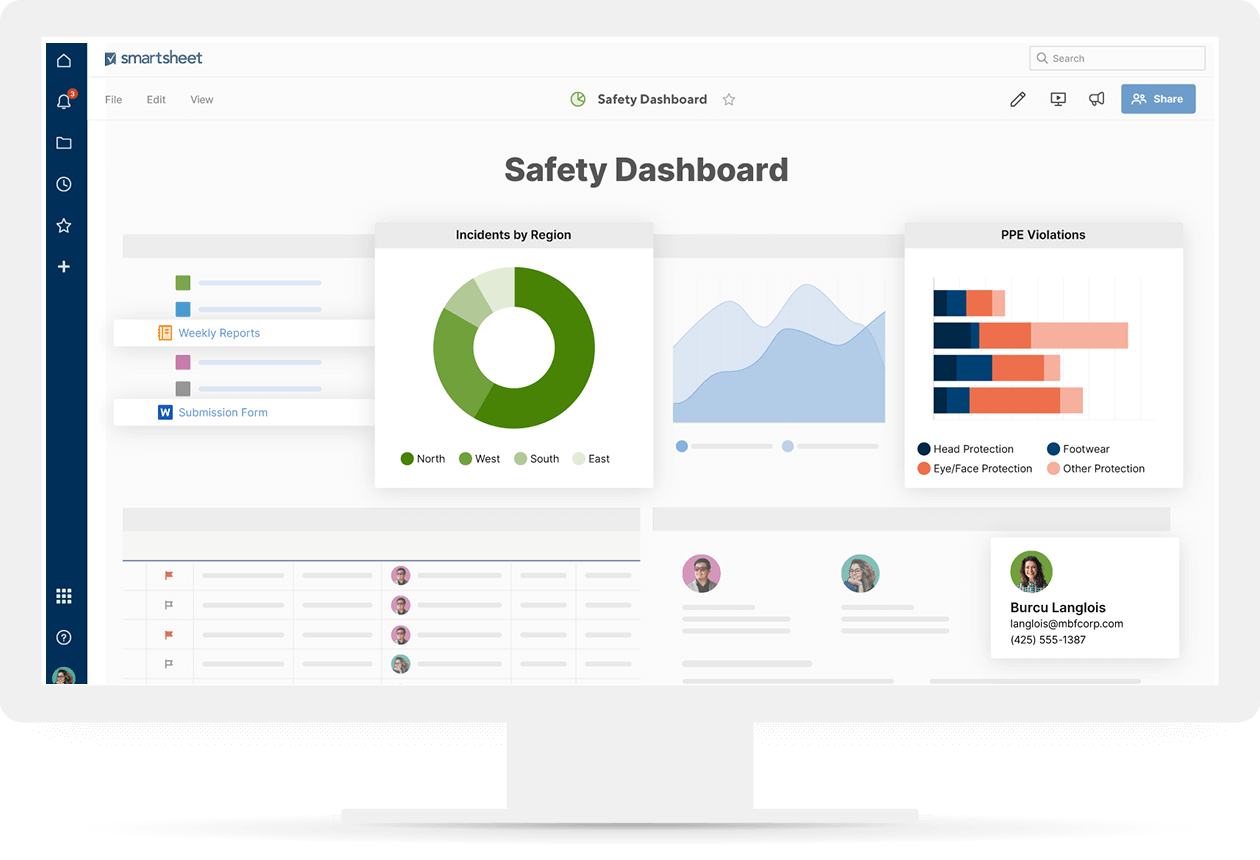




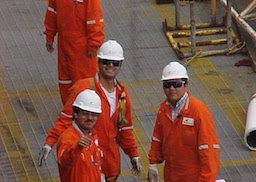
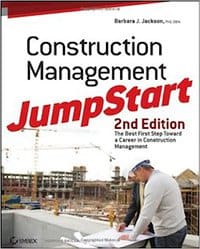
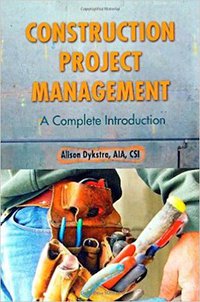
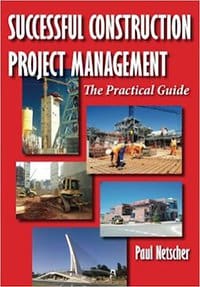
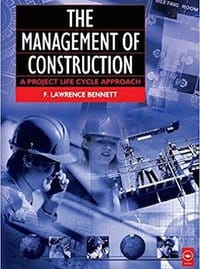

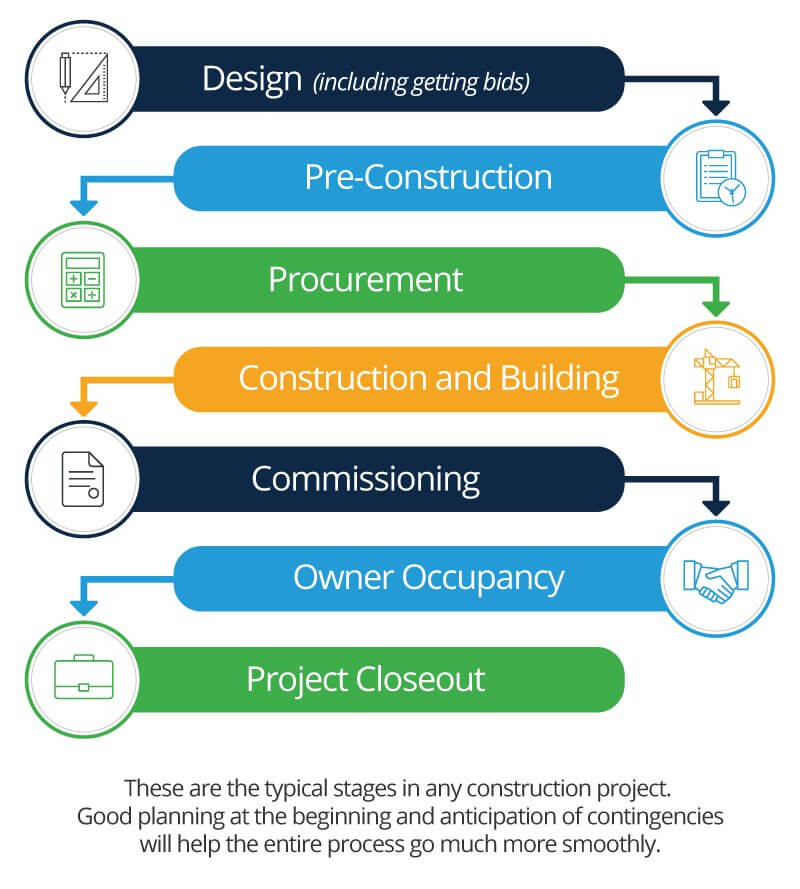
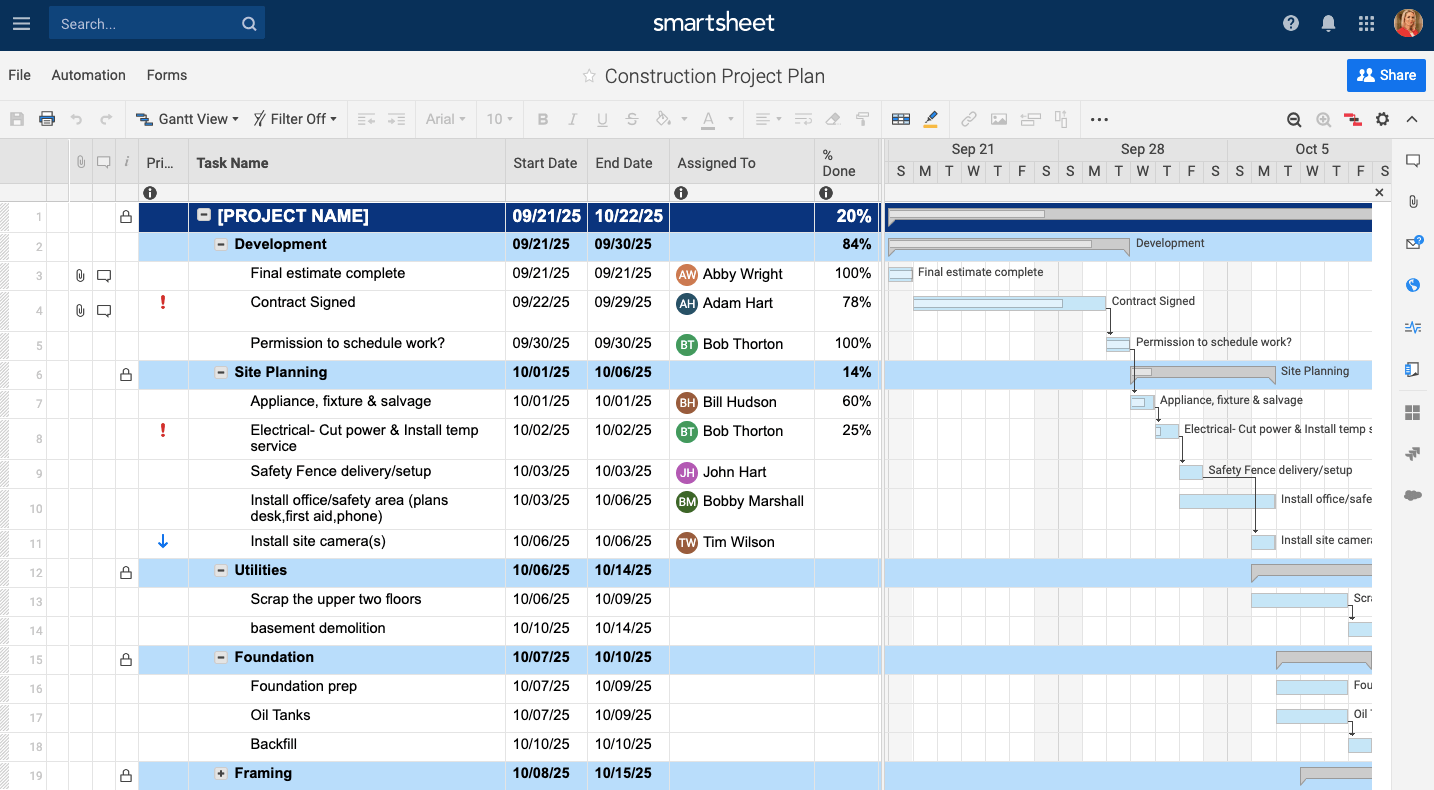
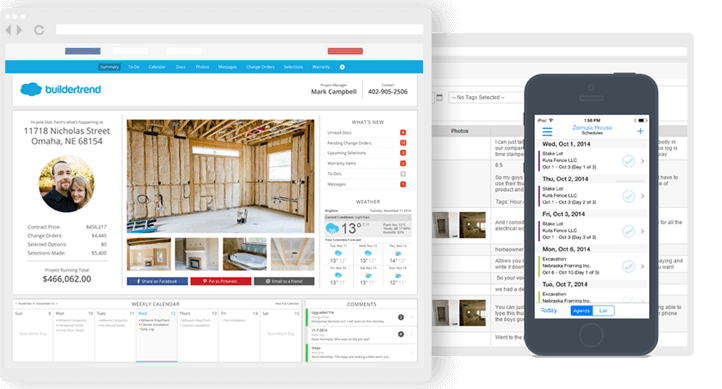
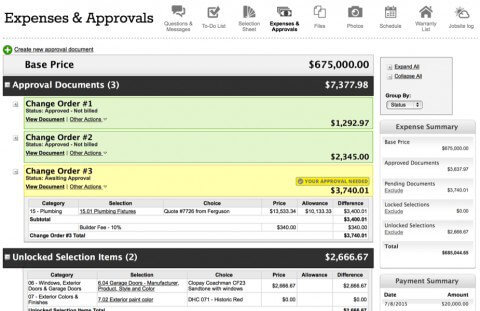
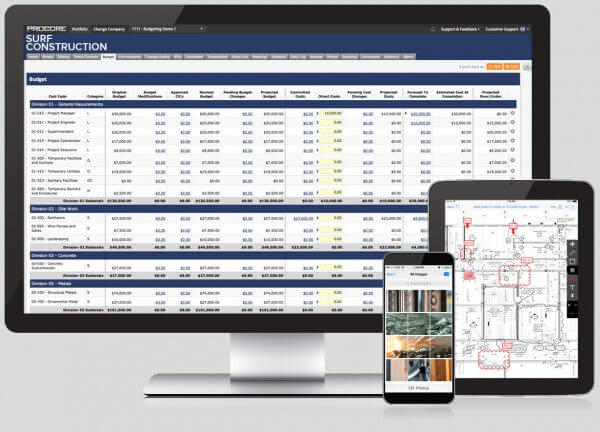
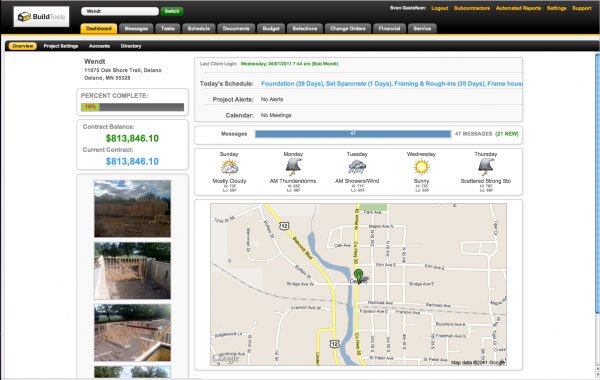
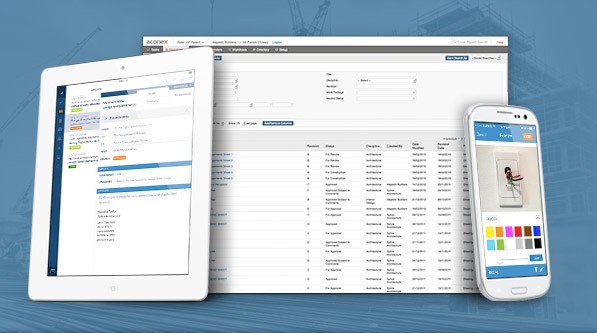
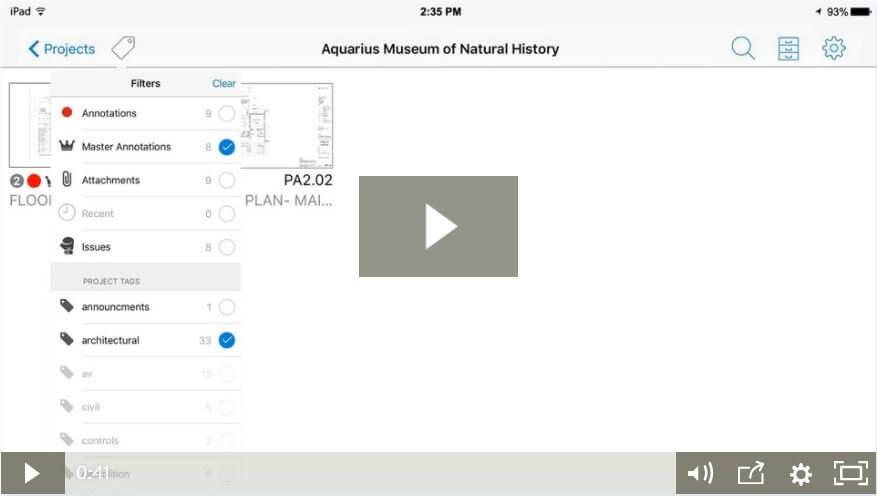
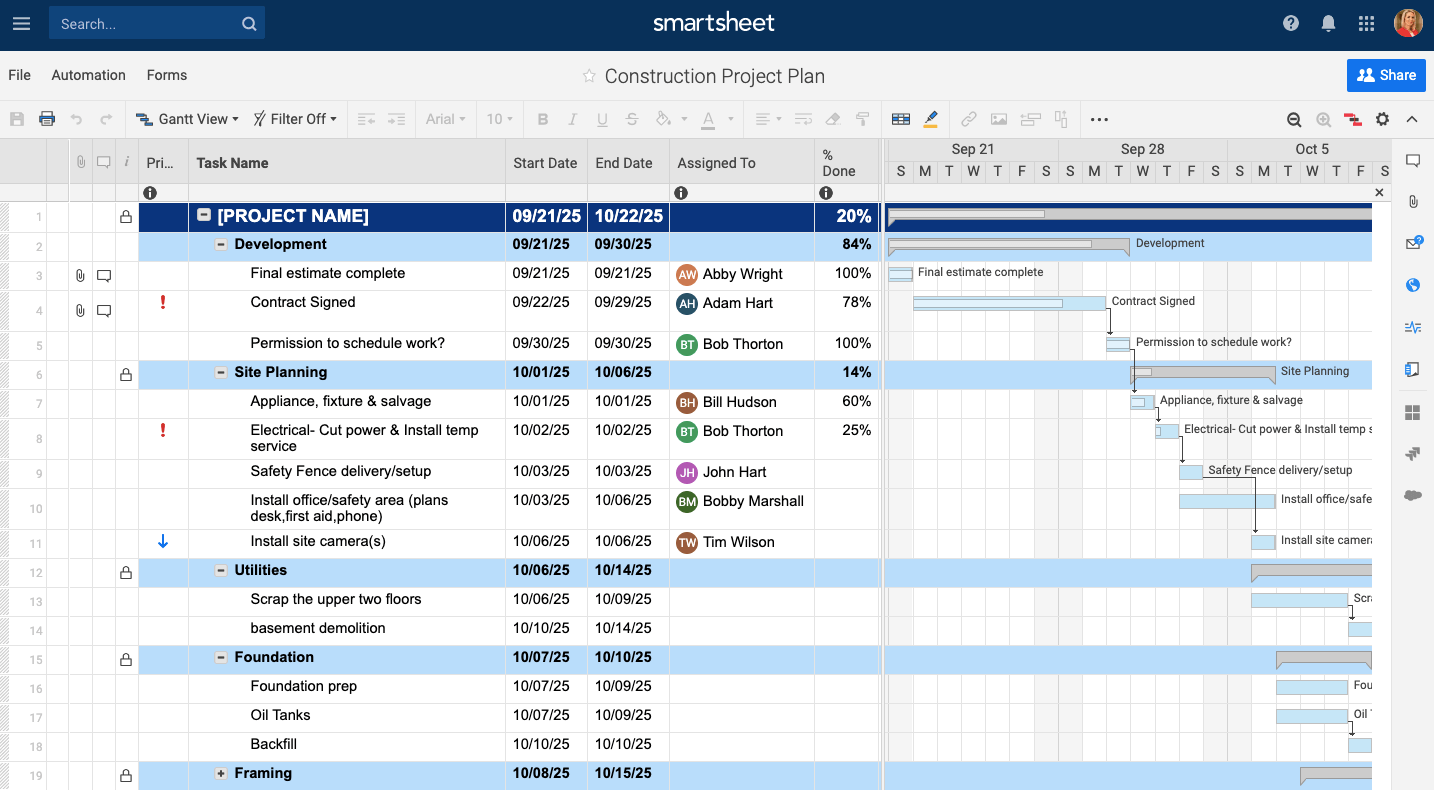
Postar um comentário for "Introduction to Building Plans and Working Drawings Mcgraw Hill"